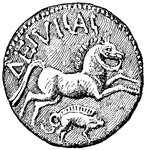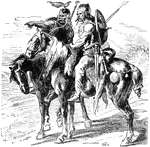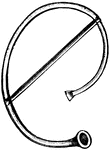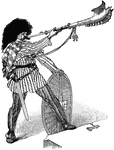Clipart tagged: ‘gaul’

Roman Centurion
A Centurio was a low-to-middle ranking officer in charge of a "century," ideally 100 men but ranging…

Coin of Diviciacus
The Coin of the King of the Suessiones, Diviciacus, with bust on front and prancing horse on back. Front.

Coin of Diviciacus
The Coin of the King of the Suessiones, Diviciacus, with bust on front and prancing horse on back. Back.

Franks Crossing the Rhine to Establish Themselves on the West Bank as Allies of Rome
A group of Franks, mainly men with a couple of women and children, cross the Rhine River on a wooden…

Gallic Soldier Wearing Trousers and a Horned Helmet
A soldier from Gaul carrying a sword in his right hand and shield in his left. He is wearing a cloak…

The Dying Gaul
A Roman copy of an ancient Greek sculpture. The copy is made of marble, while the lost original sculpture…
Roman Siege Works
A Roman Siege Works, with A and B, a double wall; C, C, C, Vineæ; D, an Agger; E, a movable tower;…

Torque
"A Torque, in archæology, is a twisted collar of gold, or other metal, worn around the neck, in…

Vinea
A Vinea, or Testudo, a small structure framed with wood used to protect soldiers attacking city walls.

Gaulish Warriors
An image of two Gaulish warriors participating in a series of military campaigns against Julius Caesar.




